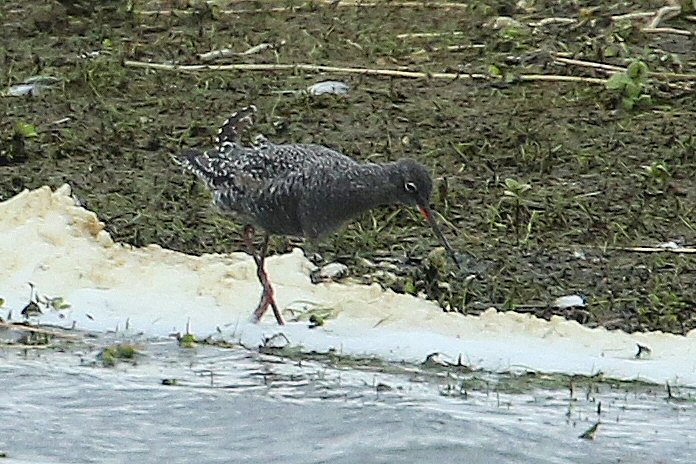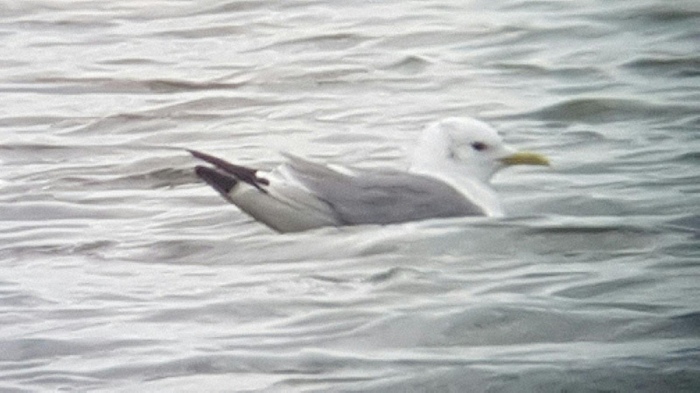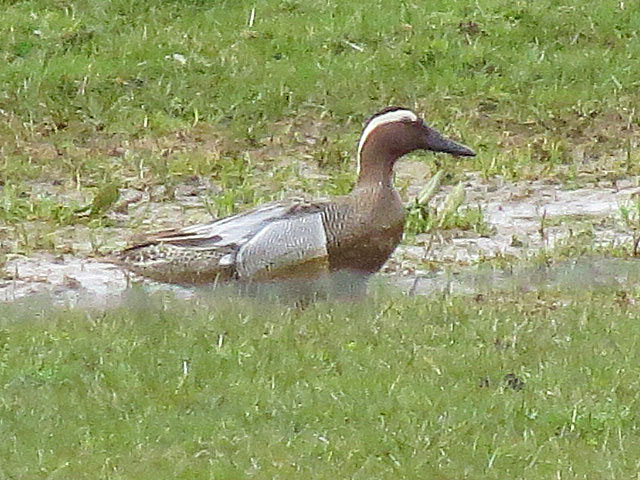The week commenced with cold northerlies and biting rain on 16th, when observers at Harrington Airfield also experienced snow showers. Following overnight frost, the 17th dawned bright and sunny and occasionally relatively warm, dry weather ensued for the remainder of the week, with the wind taking on an easterly element. Migrants – it seems – were undeterred and both new arrivals and fly-overs were logged in numbers throughout the county.
The law of diminishing ducks kicked in this week and, aside from Pitsford’s Ruddy Shelduck, the female Scaup remained at Summer Leys LNR until 20th, after which it promptly disappeared. Speculation it is incubating eggs containing Tufted Duck DNA has been running high …
Just when we thought we’d seen the back of them, another Great White Egret was seen flying north-east along the River Nene Valley at Summer Leys on 17th; it did not linger.
There was a better showing of raptors this week with a Marsh Harrier between Wollaston and Strixton on 21st, the immature male Goshawk again in Scaldwell Bay at Pitsford Res on 18th and an Osprey at the same location on 16th-17th, while reports of

Peregrines were limited to one at Stanford Res on 16th and a pair at a potential breeding site all week. The first Hobbies of the spring were singles between Pitsford Res and Holcot on 19th and at Blueberry Farm, Maidwell two days later.
Preceding a flurry of wader activity at Summer Leys later in the week, three Common Cranes were picked up flying low north-east along the River Nene Valley there late in the morning on 17th. This species remains a scarce visitor and, following the fourteenth county record in 2013, four reports in 2015 have yet to be assessed.
Reports of Ringed Plovers were limited to singles at Pitsford Res on 20th-21st and Summer Leys on 22nd, while Little Ringed Plovers were present at Summer Leys, Stanwick GP and near Northampton, with a fly-over at Harrington AF on 18th. Following the first Whimbrel of the spring at Pitsford Res on 15th, more appeared with singles at Thrapston GP on 17th, Pitsford Res on 18th and 22nd and three at both Summer Leys and

Stanwick GP on 20th, while single Curlews visited both Summer Leys and Stanford Res on 16th and single Bar-tailed Godwits appeared at both Summer Leys and Stanwick GP

on 20th. The latter site held the week’s only Ruff for one day, on 17th, and half of the week’s Dunlin, with three there on 16th – the others being two at Clifford Hill GP on the same date and one at Pitsford Res on 18th.

Common Sandpipers were recorded throughout the week at Pitsford Res, Stanford Res, Stanwick GP and Summer Leys with no more than two at any one site, while single Green Sandpipers were still at the Northampton end of the Brampton Valley on 16th, Pitsford Res between 16th and 20th and at Ditchford GP on 20th. Two splendid full summer-plumaged Spotted Redshanks arrived at Summer Leys on 20th, with one remaining

there until the week’s end and being joined by up to two Greenshanks and a Wood Sandpiper from 21st. The only Common Snipe reported were two at Stanford Res on 16th.


Following last week’s influx of Little Gulls, this week seemed strangely quiet with just a first-winter at Pitsford Res on 16th and it, or another, there on 18th.

The latter date saw the arrival at Stanwick GP of an adult Kittiwake but the only other gulls of note were a second-summer Yellow-legged Gull at Stanwick on 16th and one at Pitsford Res on the same date.

A Black Tern visited Hollowell Res on 19th and Arctic Terns continued to move through with 16th seeing eight at Stanwick GP, five at Boddington Res and one at Hollowell Res, while eleven were at Stanwick and one at Stortons GP the next day, followed by singles at Clifford Hill GP on 21st and Stanwick again on 22nd.
Ring Ouzels continued to be seen at Harrington AF until 21st with up to three there on the latter date, including a male which often showed well in a ploughed field adjacent to the shooting wall. One was also found at Blueberry Farm, Maidwell on 17th. Harrington also attracted migrant Common Redstarts with three there on 17th and one on 21st, while two were at Fawsley Park on 16th and one at Brackley on 21st.

Harrington AF again proved to be the principal location for Northern Wheatears with the site attracting up to six between 16th and 21st. Interestingly four were trapped and ringed on 17th with two of these proving to be of the Greenland race leucorhoa – colloquially known as Greenland Wheatear. Elsewhere, single Northerns were at both Pitsford Res and Hollowell Res on 16th with four at Blueberry Farm the following day. Similarly northbound, White Wagtails again occurred in small numbers which included two at Pitsford Res on 16th with one there on 20th, two at Summer Leys on 17th, three at Clifford Hill GP on 18th and one at Hollowell Res on 22nd, while single Tree Pipits flew over Harrington AF on 18th and Hollowell Res the following day.



























